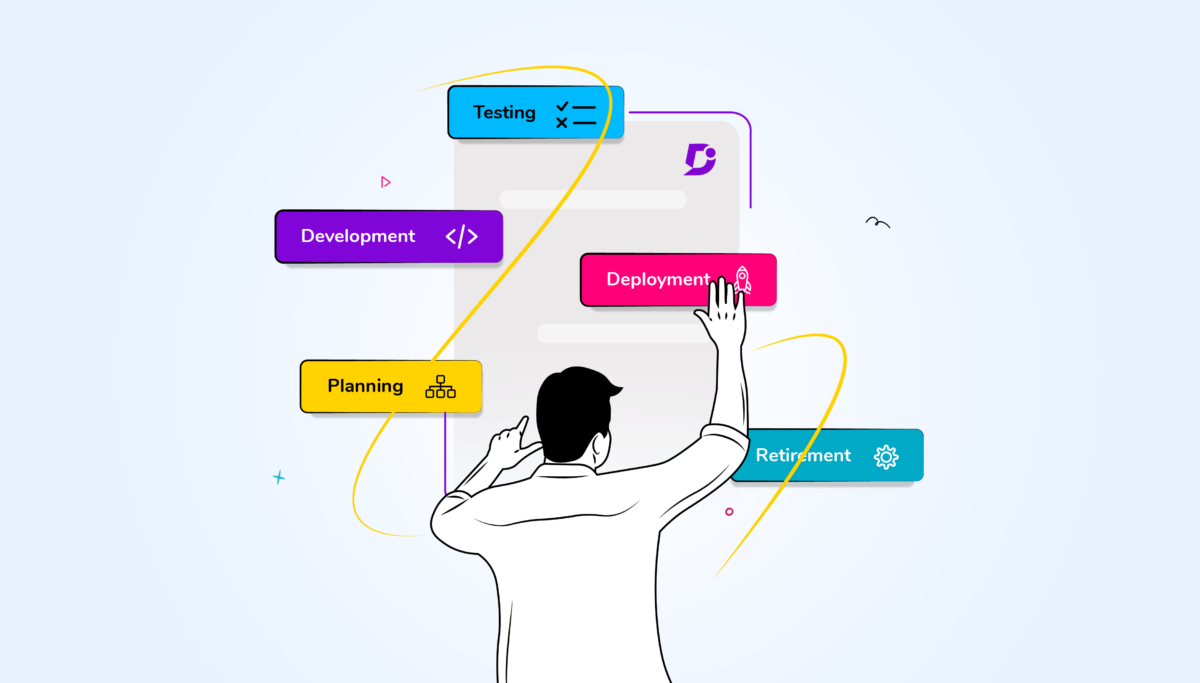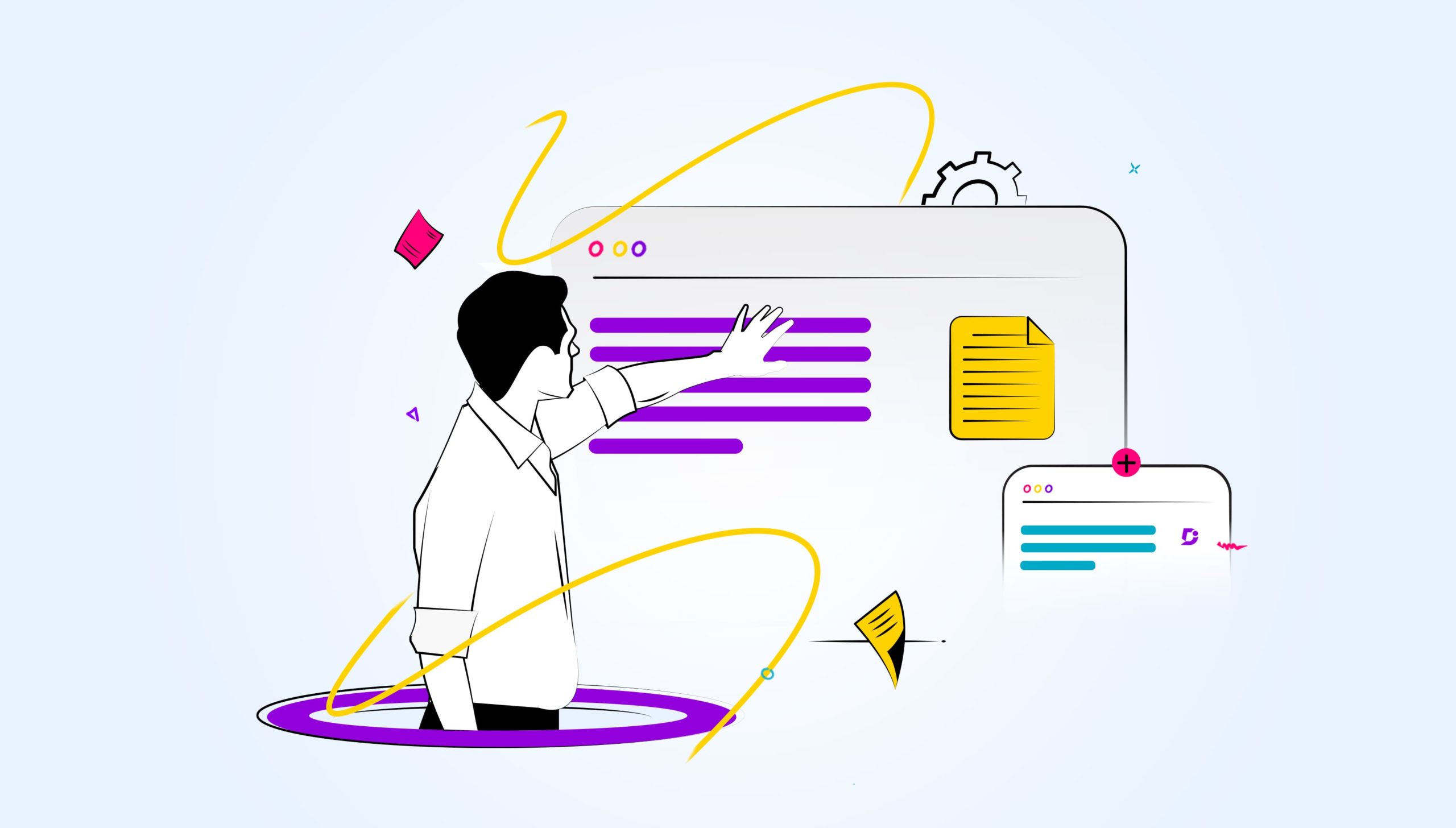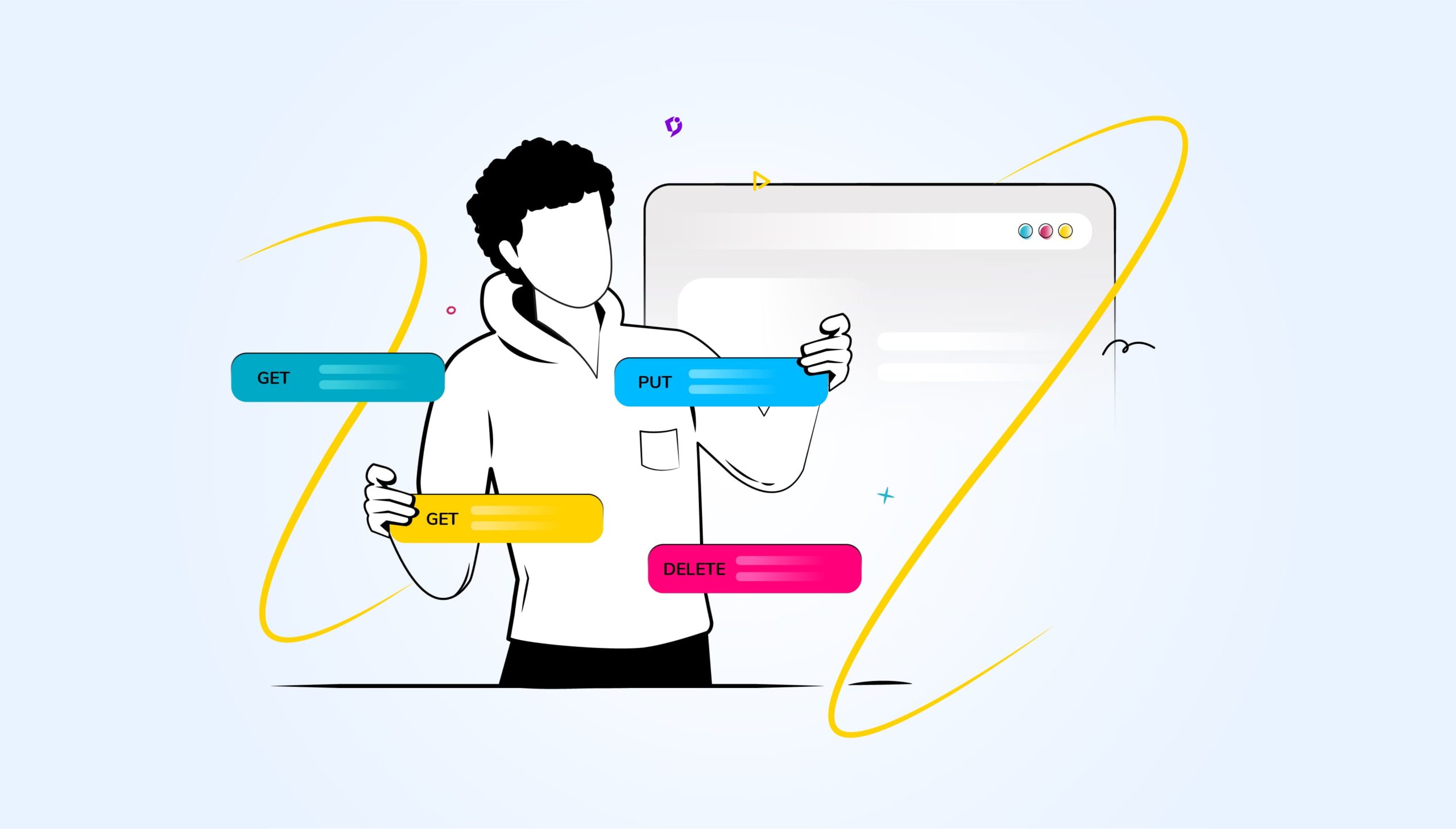Simply put, API lifecycle management involves the practices and processes for managing an API by following a phase-based approach to designing, developing, testing, and retiring APIs. API lifecycle management is one component of overall API management, a topic we will discuss more in this blog post.
Why APIs deserve lifecycle management
Before discussing how to manage the API lifecycle, let’s set the stage by discussing why APIs deserve management like other software products.
According to market research by GlobeNewswire, the microservices architecture market is projected to be USD 21.67 billion by 2030. In the same article, GlobeNewswire reports, “one of the main growth drivers in the microservices architecture market is thought to be the increasing use of connected devices such smartphones, fitness trackers, tablets, wearables, smart home appliances, and drones.”
So, what is the connection of APIs to microservices? APIs specify how different software components should interact and communicate programmatically and are the “glue” that allows separate system components to exchange data using an architectural model (notably REST). APIs act as a “liaison” between system components written in different programming languages in microservices architectures. These components require an interface for communication, the API. Communication between system components is not possible without APIs. Or, at best, highly inefficient. Not only are APIs interfaces for microservices, but they are also independent pieces of functionality.
When we defined API lifecycle management earlier, the phases should have seemed very familiar: design, development, test, etc. You may think – these phases are the same for managing the software lifecycle. And you would be correct. API lifecycle management seeks to treat APIs as products and manage them the same way as standard software, so the phases are nearly identical.
Businesses treating APIs like fully-pledged products is a recognition of the value of APIs and how managing them improperly could have detrimental business consequences.
Benefits of following an API Lifecycle Management Plan
Following an API lifecycle management plan allows you to:
-
-
- Promote consistency in API design, development, testing, deployment, and retirement.
- Ensure the API is release-ready through in-depth functional, performance, and acceptance testing.
- Produce consistent customer interfaces and processes by establishing governance programs and API style guides.
- Focus on designing APIs to solve a business problem using data models that conceptually map API functionality.
- Foster collaboration throughout the API lifecycle.
- Refine the API through feedback and API usage metrics.
- Define the security policies that govern how API users interact with the API.
- Release new versions of an API while maintaining API stability.
- Retire APIs and API versions without disruption to API users.
-
API Lifecycle Management Phases
The phases of API lifecycle management are not strictly defined. While the phase names may vary, most experts include the activities described below in their management plan.
Plan & Design
In the Plan & Design phase, a real-world problem that can be solved using an API is identified and researched. Business stakeholders determine the specific services and functionalities that could solve the problem. After fully articulating the API’s business objective, team members can turn their broad API solution into functional and non-functional requirements.
The next step is to create data models that model the system based on the business requirements. According to Tibco, a company that offers an API Management platform, “A data model, in a nutshell, is a set of data specifications and diagrams related to explain data requirements and related designs.” There are several kinds of data models. Two models applicable to API design are the conceptual and logical data models.
-
-
- The conceptual data model organizes business concepts, processes, and rules into a conceptual framework with little technical detail.
- The logical data model continues the requirements analysis by translating concepts into system entities, relationships, and attributes. An entity is any “thing” associated with some functionality in the system. A relationship is any relationship between two or more entities. Finally, each entity has attributes that describe the entity.
-
Another deliverable of this phase is the API style guide. The API style guide ensures consistency between API elements for naming conventions, error messages, pagination, etc.
After the data models and style guide are completed, business stakeholders can hand off their designs to developers.
Develop
The next step represents a handover between business stakeholders to developers in the Develop phase. Developers use the logical data model to model API resources, endpoints, methods, parameters, request bodies, schemas, and other API components. They write or generate an API specification for the API that details all API elements. Developers apply naming conventions based on the API style guide and the API elements described in the logical data model.
Developers can then create a mock-up to allow stakeholders to test the design of the API and gather feedback. Mockups usually include only a sample of the core resources of the API and not the entire system. Mock-up APIs should include a command line console that allows users to send API requests and provide some way for the user to receive data back. Mockups are an opportunity to document new use cases and fine-tune the API design using the feedback gathered from users.
Once the updated API design is finished, developers can develop an API based on the API specification while leveraging their existing code written for mockups. Managers and Scrum leaders use tools like JIRA to create user stories, short stories, and novels that organize the development of the API into individual development tasks.
Test
After the completion of the Develop phase, testing can begin. There are three types of testing: functional, performance, and acceptance:
-
-
- Functional testing tests the API features (inputs and outputs) based on the options described in the API specification. Testers comprehensively test all API resources and parameters to ensure the expected output is returned.
- Performance testing is a stress test for the API that determines if the API can handle high traffic. This test ensures that the API is scalable by design and has reliable performance during high traffic.
- Acceptance testing ensures that the API solves the particular business problem it sought to solve. The business solution can evolve after API development to include new use cases. For example, based on the API usage, it may be discovered that there is a new case use that requires the addition of a new parameter to a resource.
-
Deploy & Monitor
Many businesses use an API’s initial deployment as the second phase of performance testing. Instead of artificially overloading the system with API requests, the API is tested using real users that send many simultaneous requests to the API server. There should be a mechanism to revert the API to a stable version if an issue occurs during or after deployment with proper notifications in place.
APIs must be made available through a secure environment. APIs are usually deployed and managed long-term using API Management platforms like AWS API Gateway or Microsoft Azure API. These platforms provide developers access to APIs and a secure connection for clients and API servers. An API Management platform is integral to successfully deploying and managing APIs long term. They usually contain the following modules:
-
-
- The API gateway is like a security guard for the API that authenticates users, authorizes client requests, and secures client connections to API servers. The API gateway also functions to redirect traffic to the right resources depending upon certain business requirements.
- The API portal can automatically generate new documentation and allow developers to deploy their APIs.
- The API lifecycle management module allows you to manage the API at every phase in the API lifecycle. API Management platforms can help you manage the retirement of APIs.
- The API policy manager allows you to configure policy templates for your API users that manage API traffic, security, and performance.
- API Analytics allows businesses to monitor API usage, activity logs, and historical data to provide a high-level status for how well the API is achieving its intended business goals.
-
Retire
The Retire phase involves deprecating an entire API. There are many things to consider when retiring an API:
-
-
- Is there a retirement plan for internal stakeholders and external customers?
- Is there a communication plan?
- Is there any action the users need to take, or is retirement seamless?
- If applicable, how will you manage the transition to a new API?
-
Sunsetting an API requires effective communication and clear documentation. This is especially true if user action is required. Many times legacy APIs are replaced by new ones with improved functionality. The Retire phase can also be applied to retiring API versions to ensure smooth transitions to new versions.
The retirement process requires close monitoring to ensure API users are adequately informed and not negatively affected by API retirement.
Also, check out our article on API Strategy
Challenges of API Lifecycle Management
The following are the challenges associated with managing the API lifecycle with the potential solutions an API management platform can provide.
Versioning
New versions of APIs have the potential to break API users’ applications if developers do not ensure API stability. Some new versions are seamless and only involve a change in the backend that does not affect the API interface. Another “low impact” change could also involve the addition of a new parameter that requires documentation to tell the user how to use it.
However, when an API interface changes and subsequently changes how the user interacts with the API, problems can occur. Developers should ensure a smooth transition through a communication plan, release notes, and clear documentation for integrating new features that affect existing functionality. An API management tool can help you manage the deployment of new versions with a mechanism for rollback.
Security
APIs expose sensitive business data. Businesses must provide secure interfaces for API users to interact with APIs that protect this data.
An API Management platform provides functionality for handling access to APIs by:
-
-
- allowing users to sign up for plans, usually progressively tiered
- generating APIs for client applications
- providing an interface for accessing the API
- securing connections between clients and the API
- managing security policies that dictate interaction with the API
-
Documentation
Documentation is an often understated aspect of API management.
APIs that adhere to a design language like REST can take advantage of third-party tools that render documentation directly from the spec. This type of documentation is called “reference” documentation and provides a comprehensive manual of all API components like resources, endpoints, and parameters.
An overlooked form of documentation is API conceptual documentation which includes getting-started guides, use cases, and tutorials. This documentation is labor-intensive because it is human-written and requires collaboration between technical writers, business stakeholders, and developers. Conceptual documentation becomes challenging as time and resource constraints are applied to development teams and technical writers.
An API Management platform will not write conceptual documentation for you, it can automatically generate reference documentation for your new releases.
Ready to take your API documentation to the next level? Book a demo with Document360 today!
Book A Demo
Also, check out our article on API Documentation tools
Governance
Governance is the practice of ensuring a consistent developer experience across all client touchpoints of the API. An API style guide can ensure consistent design patterns are followed throughout the API lifecycle as APIs are designed, developed, and improved with feedback. Styleguides include guides for all API elements and help ensure consistency between APIs belonging to the same platform.
Governance goes beyond design consistency to include all standardization practices for the API, including documentation standards.
Scalability
The scalability of an API is a measure of the API’s ability to support increased API usage without sacrificing performance.
Part of API testing is performance testing in pre-production when an API is stress tested through simultaneous requests to break the API. After releasing the API, performance must be maintained as the number of API users multiplies and the strain on the API increases. Testing is required after deployment to ensure a consistency of service that delivers on customer promises.
Analytics
Businesses that cannot capture analytics effectively are unable to maintain scalability and uncover business insights.
Rather than build custom analytics applications, businesses use API Management platforms that offer built-in analytics dashboards to understand patterns in API usage, constraints on performance, or causes of frequent errors. Businesses can then take the gathered data to make informed business decisions for improving the API.
Best practices in API lifecycle Management
The following are some best practices to consider when following an API lifecycle management program.
Don’t Shortcut the Design Phase
One of the benefits of following an API lifecycle management plan is fully fleshing out the business objectives in the in-depth Design and Plan phase. Before writing a single line of code, ensure the API’s business objectives are fully articulated. The design phase produces functional and non-functional requirements, data models, and an API style guide. These outputs are required to create an API specification. Pre-maturely ending the Plan & Design phase can lead to costly changes during the development phase.
Choose the right API Management tools
API Management tools can help you manage the API lifecycle. It is important to choose the right tool based on your needs. For example, if the API target is public cloud computing, it may be best to use platforms that support cloud API management (multi-cloud/hybrid cloud) like those offered by Amazon or Google. These platforms also recognize that REST APIs may not require a suite of API Management tools. In these cases, you may only need to use their API Gateway.
Do you require a flexible API management platform that lets you incorporate the tools of your choice but manage them centrally? Then, it may be better to use a platform like Anypoint that emphasizes “self-integration” and the customization of components.
You may not need a central API management tool at all. Instead, you can create an infrastructure to stitch together separate tools. For example, you may use different tools for an API gateway, API lifecycle management, API Policy manager, Analytics, etc.
Assign a dedicated API Development Team
Dedicated development teams allow businesses to build and maintain APIs while ensuring consistency through a governance program. A team can constantly evaluate a company’s API portfolio to identify areas for new business or improvements to existing APIs. It also eases the burden of documentation that would be too difficult to manage for one developer.
An API development team contains many people responsible for accessing and managing APIs. APIs should be discoverable through search and versioning filters. Team members should be able to locate API documentation, API code, and files used for testing.
Prioritize Mobile Friendliness
APIs should support the mobile experience by adopting a “mobile-first” philosophy similar to responsive web design. An API governance program can ensure API components consistently support the API’s usage for mobile development.
Monetize Legacy Services
Businesses can monetize their backend services by exposing them to public web services. API lifecycle management makes this possible through a shift in mindset. Before public API awareness, a business may not have utilized these services since they were not “products” with lifecycles. Businesses are now productizing legacy services that were not utilized before the advent of the API economy. They manage those services in the same way as standard software, allowing their APIs to evolve as user feedback is collected.
Also, check out our article on API developer experience
Wrapping Up
API lifecycle management is a phase-based approach to managing the entire API lifecycle from design to retirement. It is an aspect of overall API management that promotes consistency, performance, and scalability of APIs long term.
As the popularity of microservices architectures increases, APIs play an important role as the glue that facilitates communication between system components. APIs are not just isolated functionality, but “products” that should be managed in the same way as standard software. API lifecycle management gives businesses the framework to do this.
Also, check out our article on Internal vs. External APIs
Ready to take your API documentation to the next level? Book a demo with Document360 today!
Book A Demo







